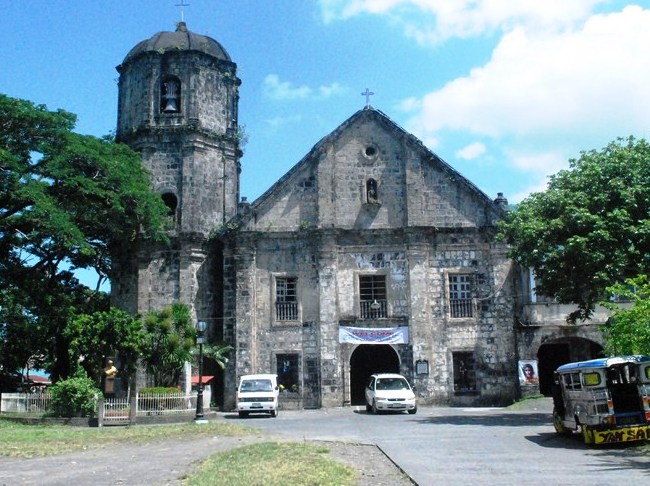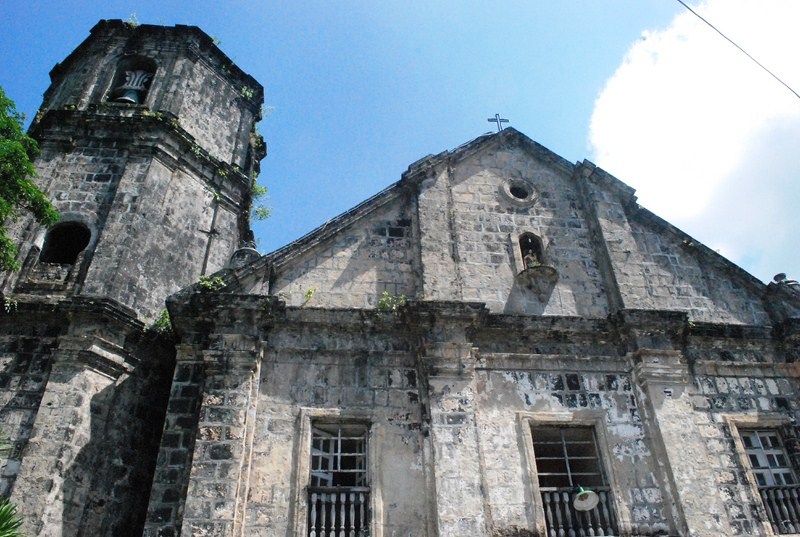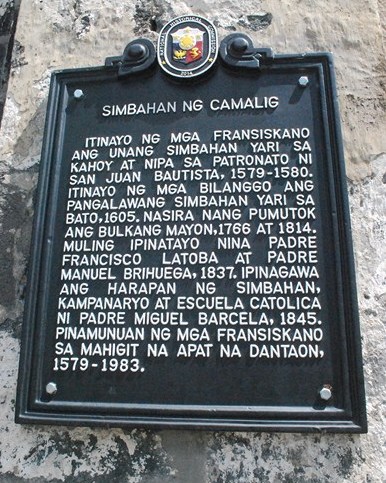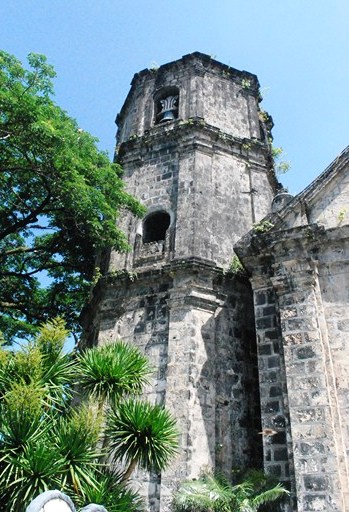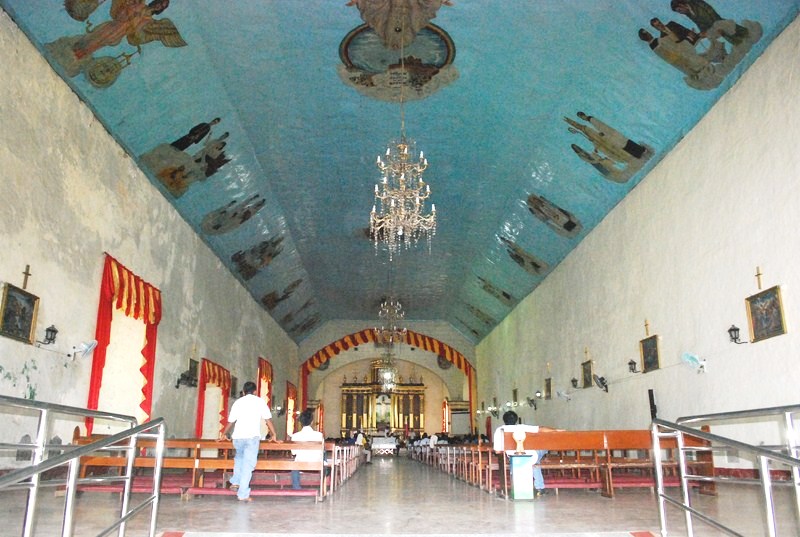First built, with wood and nipa, by Franciscan friars from 1579 to 1580, the second church, together with the “escuela Catolica,” was built with stone in 1605. This church was destroyed during the 1814 eruption of Mayon Volcano and was rebuilt with solid blocks of volcanic stones from Mayon Volcano, in 1837, by Fr. Francisco Latoba and Fr. Manuel Brihuega.
In 1845, Fr. Miguel Barcela built the church façade, the escuela Catolica and the bell tower. The church was finished in 1848. On November 1987, the church was damaged by super typhoon Sisang, (international name: Nina) losing its roof, ceiling and beams, but was subsequently repaired.
AUTHOR’S NOTES:
The church’s first level has a semicircular arched main entrance flanked by superpositioned columns and niches with statues of St. Clare of Assisi and St. Peter the Baptist (San Pedro Bautista). The second level has rectangular windows of equal sizes. The triangular pediment, above it, has a centrally located niche with a statue of St. John the Baptist, above which is a small oculus. It is flanked by superpositioned columns and separated from the second level by an entablature.
The 4-storey, hexagonal bell tower, on the church’s left, has massive bells and a fine view of Mayon Volcano. During World War II, it served as a lookout for American troops searching for Japanese stragglers hiding in hillside caves.
Inside the church is a ceiling painted with some images, chandeliers and burial niches, including a memorial stone honoring a resident who died at the age of 115 years (1797 to 1912). Its adjacent convent houses a small museum which displays some of the 2,000-year old bones, beadwork, potsherds and other artifacts found from Calabidong Cave.
Mayor’s Office: Municipal Hall, Poblacion, Camalig, 4502, Albay. Tel.: (052) 484-1965
Municipal Tourism, Culture and Arts Office: Camalig Tourism and Pasalubong Center, Brgy. 2, Camalig, Albay. Mobile number: (0927) 621-3315. E-mail: camalig_tourism@yahoo.com.
Provincial Tourism and Cultural Affairs Office (PTCAO): Albay Tourism Bldg., Albay Astrodome Complex, Capt. F. Aquende Drive, 4500 Legaspi City, Albay. Tel: (052) 481-0250 and (052) 742-0242. E-mail: albaytourism@yahoo.com and albaytourism@gmail.com.
How to Get There: Camalig is located 539 kms. from Manila and 14 kms. northwest of Legaspi City.

